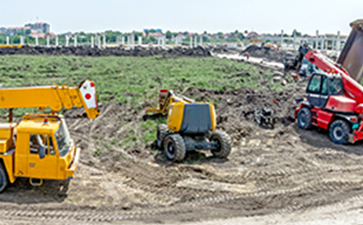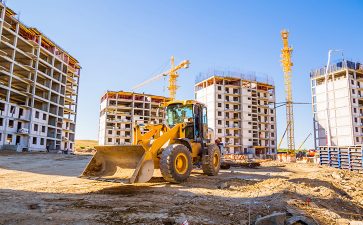To Fill or Not to Fill
FLAT-PROOFING IS SOLID OPTION FOR MAXIMIZING TIRE LIFE.
This article was originally featured in this month’s Lift & Access magazine.
By Joe Negrey
ST. LOUIS, MO – July 18, 2016 – Companies that operate telehandlers and aerial work platforms know they have different tire choices when they outfit their equipment. Although many fleet managers know about tire fill, commonly called foam fill, as a flat-proofing option, they may not recognize the advantages that tire fill offers the industry.
Tire fill is a polyurethane liquid that is pumped into pneumatic tires to replace air with a resilient, synthetic rubber core that eliminates dangerous and costly flat tires in commercial and industrial heavy equipment. Tire fill is typically delivered through the valve stem and cures within 24 hours. The material can be used in any tire with a sound casing. It is able to sustain tire pressures and footprint shape even in adverse weather conditions, including temperatures as low as -70° or in sweltering heat.
The other go-to tire choices on the market are solid-rubber tires with apertures and pneumatic tires. Pneumatic tires offer various cost advantages, but are vulnerable to going flat from nails, screws, and rebar punctures. While they can offer a float-like ride, their air pressure must also be constantly monitored and maintained to ensure safety and performance.
Solid tires are composed of the most stable tire material on the market and can’t be punctured. However, they are limited on sizes, tread patterns, and durometers, and their ride may be rougher for equipment operators. Solid tires also represent a potentially negative impact on the environment, as they cannot be reclaimed as easily as polyurethane-filled tires.
Of the three tire options, tire fill can deliver specific advantages that may be preferable for heavy equipment owners and operators. Chief among them are the following.
Virtual elimination of flat tires: Vehicles that run on traditional pneumatic tires have a significantly greater chance of experiencing a flat tire. Tire flats are dangerous to filed operators and they are costly, as they drain resources, affect the work schedule, decrease on-the-job productivity, and may render serious damage to equipment. Pneumatic air-filled tires are also at greater risk for blowouts.
Decrease in the effects of whole-body vibration: Tire Fill provides optimal rough-terrain traction and tire deflection with the lowest g-force transmission, a leading cause of whole-body vibration.
The physiological effect called whole-body vibration may result in worker attrition and job absence due to measurable muscular-skeletal and neurological injury to equipment operators. This is a real occupational hazard, not to be ignored, that can cost construction companies hundreds of thousands of dollars in damages. Tire fill can offer drivers a smooth ride that is essentially synonymous with riding on air.
Reduction in vehicle wear and tear: What many who operate heavy equipment may not realize is that polyurethane tire fill helps reduce vehicle damage from prematurely worn-out components because it lessens g-force transmission.
Mounting equipment for solid tires is expensive, and the areas around the holes in aperture tires may be more prone to cracking. That increases tire wear and hastens the end of the tire life cycle. Tire fill eases the risk, helping to extend tire usability and saving operators from incurring costly equipment damage expenses.
Opportunity for reclamation and recycling: The polyurethane in filled tires can be reclaimed much more easily than the rubber in solid tires, creating a second product lifecycle that can help reduce landfill emissions – a factor likely to be attractive for companies focused on carbon footprint reductions. The ability to reclaim and repurpose the material, as well as recycle the polyurethane fill, helps to make this medium a more sustainable, eco-friendly option.
Greater adaptability and choice: The fact that polyurethane-filled pneumatic tires have a greater variety of tread patterns, tire constructions, and compounds available allows for greater flexibility in various applications. Polyurethane tire fill comes in a variety of durometers, so the type of fill can closely fit the application, from a softer fill for comfort and deflection to a harder fill for slow moving equipment with high pressure requirements. Also, the tire fill pressure can be varied to more closely mimic pneumatic tire pressure.
Tire purchase and maintenance is one of the more significant expenses that telehandler and aerial work platform equipment owners and fleet managers must consider. While all three leading tire choices offer positives and negatives, it’s worth taking the time to explore the specific operational and financial advantages to each. Your company’s bottom line is literally riding on it.
Joe Negrey is vice president of Carlisle TyrFil™ (formerly ArncoPathway), a division of Carlisle Performance Materials™.


